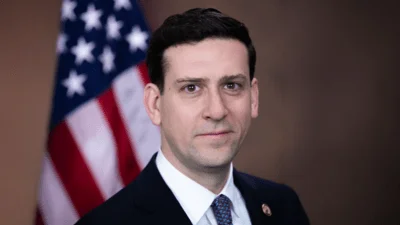RICHLAND, Wash. - Workers are nearing completion of work at the 618-10 Burial Ground, where they removed waste from 80 vertical pipe units (VPUs).
Constructed from corrugated pipes or stacked drum casings, the VPUs received radioactive laboratory waste from the 300 Area from 1954 through 1963. Workers buried them vertically approximately 20 feet below ground.
“Through extensive mockup testing that involved the use of simulated waste and other innovative tools, the work went very smoothly. It went better than anyone imagined it would," said Mark French, EM federal project director for the River Corridor.
Workers reduced design time and fabrication costs using commercially available equipment in the retrieval design, including a drill rig, excavators and cranes. Other unique fabrications included modified augers, an enclosure to filter potentially contaminated air, and a water supply system to regulate dust suppression.
Workers drove a steel case around each VPU and used an auger to grind the waste and soil within the case. They used a clamshell shovel that was lowered to retrieve the waste and soil mixture and deposit it into a steel box, where it was mixed with grout.
“Developing a safe, effective and fully-compliant system for properly removing and disposing the VPUs required thorough planning and communication," said Mark Buckmaster, CH2M HILL Plateau Remediation Company (CH2M) project manager for 618-10 VPU remediation.
The waste was packaged and transported to the onsite landfill - the Environmental Restoration Disposal Facility (ERDF) - for disposal. Workers spent more than 125,000 hours safely and compliantly completing this task. The ERDF team disposed of more than 2,000 tons of waste from the VPUs.
“We have made remarkable progress thanks to a team committed to working safely and efficiently," said Tammy Hobbes, CH2M 618-10 vice president. “In coordination with the Department of Energy and our regulator, the Environmental Protection Agency, the workforce remains instrumental in accomplishing our mission of reducing the environmental risks across the Hanford Site.
Workers are remediating 14 additional VPUs that are thick-walled steel pipes, requiring different technology. They are being processed in small sections by shearing them under a liquid grout and mixing the contents. Workers continue remediating the waste trenches, having removed more than 2,200 drums to date, some of which are concrete-lined and contain extremely radioactive items.
Source: U.S. Dept. of Energy, Office of Environmental Management









